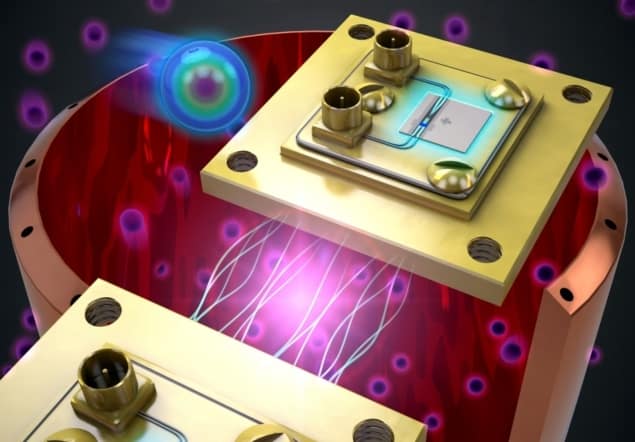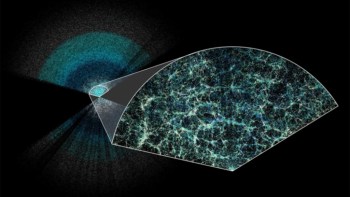
The search for axions, a hypothetical type of dark matter, could become far more efficient thanks to the emerging technique of light squeezing, according to researchers in the US. Kelly Backes and colleagues incorporated the technique into Yale University’s HAYSTAC axion experiment; halving the time needed to analyse their data. Their results highlight the promising potential for the widespread adoption of light squeezing by axion experiments worldwide.
Axions are predicted to be chargeless, much lighter than electrons, and produced in abundance after the Big Bang. This makes them a popular candidate for dark matter, a mysterious substance that appears to permeate the universe and affect the gravitational properties of large objects such as galaxies.
Recently, several experiments have tried to detect axions using strong magnetic fields, produced in the lab at cryogenic temperatures. The idea is that axions will scatter from quantum fluctuations in these fields, producing photons whose frequencies are proportional to axion masses. However, the signals produced by these photons are expected to be very weak and require extremely low levels of noise to detect. Recently, this has presented researchers with a fundamental limit to the accuracy of their measurements.
Quantum needle in HAYSTAC
The problem stems from Heisenberg’s uncertainty principle, which describes an inescapable trade-off in accuracy when measuring the positions and momenta of quantum particles such as photons. This “quantum noise” presents a significant barrier to experiments aiming to verify existing dark matter theories, which encompass a wide range of potential axion masses. Ultimately, identifying individual photons, whose frequencies must deviate from quantum fluctuations to highly specific degrees, is like finding a single quantum needle in an enormous haystack.
In their study, the team based at Yale, the University of Colorado, NIST and the University of California Berkeley pushed the HAYSTAC experiment to reach beyond this limit using the latest advances in light squeezing technology. This technique works by reducing the uncertainty of one component (position or momentum) to beyond the usual quantum limit at the expense of increasing the uncertainty in the other component. With the right approach, further knowledge can be gained about the component of interest without losing too much information about the other component.

Cosmic-ray detector might have spotted nuggets of dark matter
The researchers tested this principle by using HAYSTAC to search for axions with masses predicted by two particular theories. Previously, analysis of the resulting data would have taken around 200 days to complete. In this case, however, light squeezing enabled Backes and colleagues to handle the entire dataset in just 100 days – unfortunately, finding no clear evidence for axions.
This improvement was relatively modest, but the researchers note that light squeezing technology is still in its early stages. Through further improvements, experimental tests of axion theories could become far more efficient still. Backes’ team now hope that their manipulation of the uncertainty principle will soon be extended to a wide variety of experiments like HAYSTAC; potentially bringing a long-awaited explanation of dark matter a step closer to reality.
The research is described in Nature.



